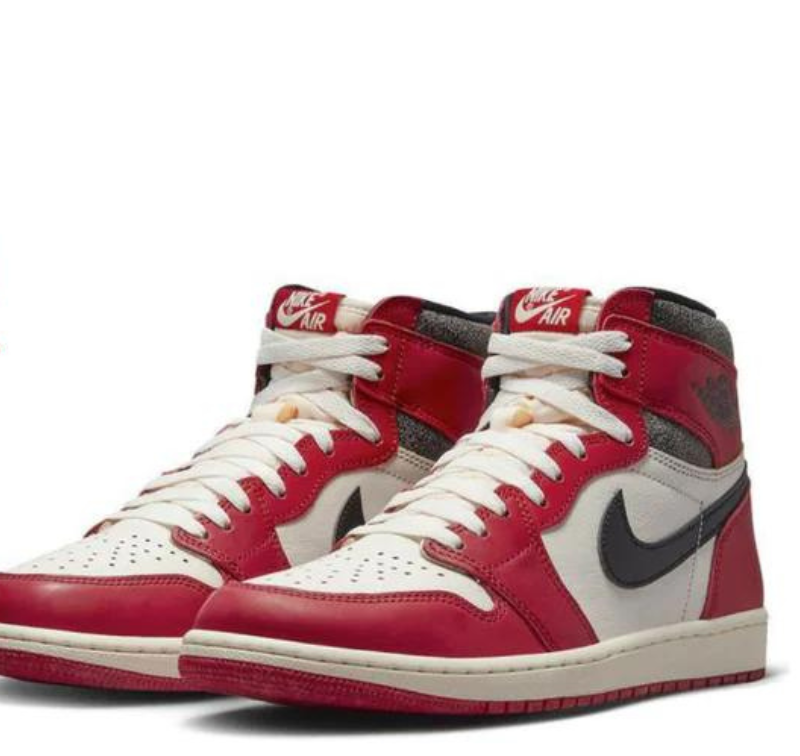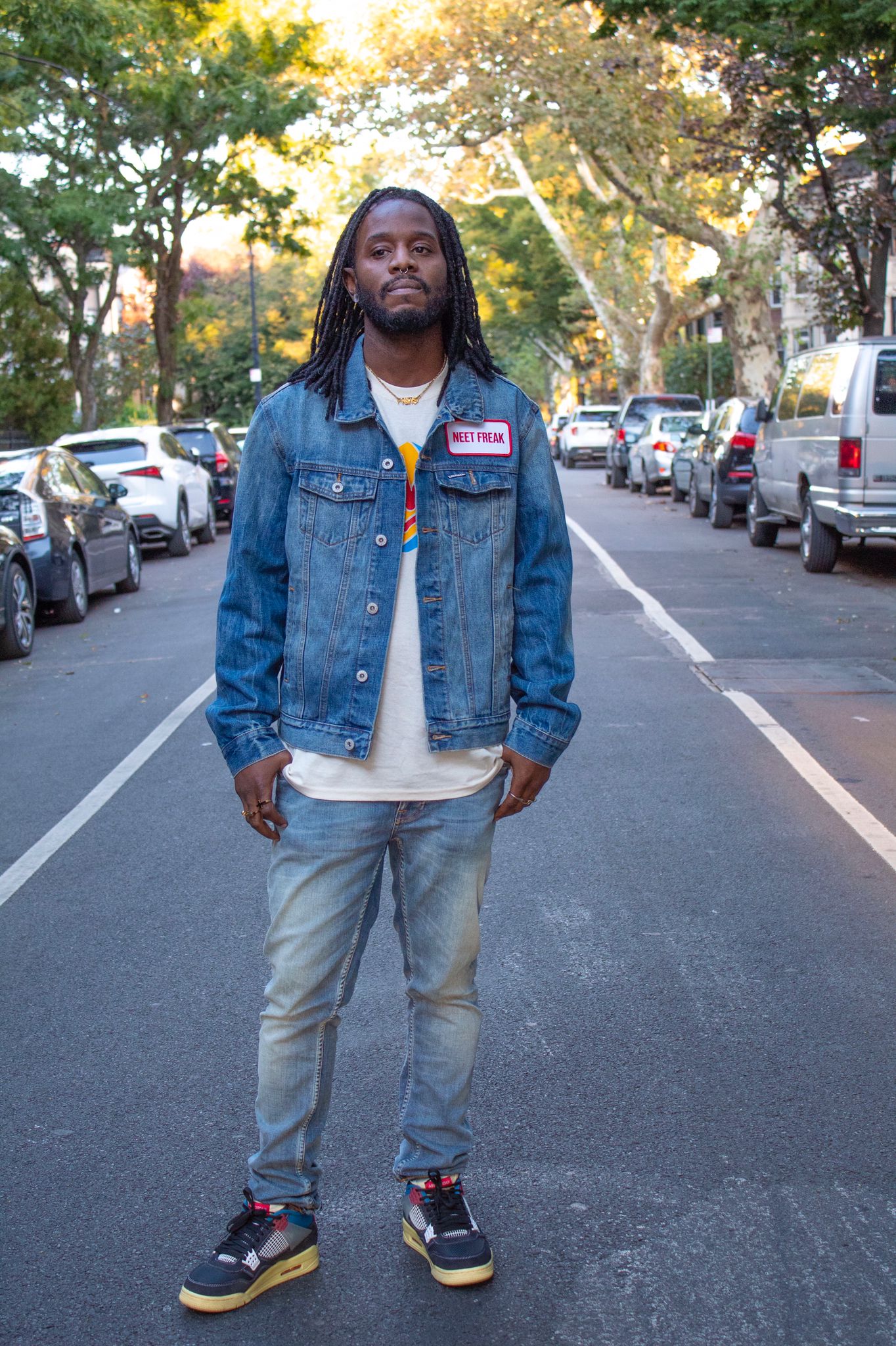NIKE AIR JORDAN 1 "LOST AND FOUND" CONTROVERSY, & THE CONCEPT BEHIND THE SHOES

Recently, the Nike Air Jordan 1 "Lost and Found" Controversy has made headlines after it's launch. There have been numerous complaints of mold-affected pairs, suggesting that Jordan Brand may have overdone the ageing process. Recently, images and a number of first-person stories on NikeTalk revealed that numerous pairs had mould damage on the heel and around the ankle.
THE NIKE AIR JORDAN 1 “LOST AND FOUND” CONTROVERSY
Since we are already aware of the Air Jordan 1's main features. It's a mainstay of the sneaker scene. However, the Air Jordan 1 wasn't destined to become a timeless classic.
There weren't high hopes when it made its debut in 1985. Instead, there were naysayers who loudly chirped about Nike's choice to offer Michael Jordan a sizable sneaker deal before the rookie even participated in a game, as well as the rookie's decision to sign with a business that, at the time, was best known for producing running shoes.
By winning Rookie of the Year and averaging 28.2 PPG, 6.5 RPG, and 5.9 APG in 1985 while sporting Air Jordan 1s, Jordan instantly changed the course of the story on the court. The Air Jordan 1 was spurred by Michael Jordan's meteoric rise, which increased demand across the country and made the shoes a must-have for basketball fans.
A photo of a mold-covered "Lost and Found" Air Jordan 1 High that appeared on Niketalk was widely shared on Twitter by users worldwide.
Nike has allegedly started cancelling orders affected by the problem and urging shops to send back damaged shoes, according to claims made on the forum and on Twitter. Jordan Brand quickly responded, saying, "We are aware of the issue and are working to address it to improve future experiences," according to a spokesperson who talked to Complex. Fewer than 1% of all "Lost and Founds" currently in circulation, according to reports, were impacted.
The launch was not altogether trouble-free; customers of Nike's SNKRS app were unable to even access the app to attempt and secure the chance to purchase a pair due to a bug. Following the release, a few internet tales of pairs of the coveted Air Jordan 1s that were ruined by mould have surfaced.
Lost & Found: A Creative Concept
In order to bring this nostalgic tale to life, the Jordan Brand team that created the AJ1 Chicago was meticulous in every aspect of the shoe's design. The original AJ1 was described as having "little to no wear but with materials that lay for years in a crate and didn't endure the test of time" by Jordan designers, who looked at numerous pairs of AJ1s in various levels of distress to capture the subtleties of the shoe's appearance.
THE INITIAL IDEA
In the end, the team concentrated on a number of crucial Chicago design cues to advance the story of the AJ1. To emphasize the inspiration for the shoe, the upgraded 2022 Chicago is displayed beside a vintage 1985 Air Jordan 1.
The original "Chicago'' colorway made its debut in 1985, and this is the most recent iteration of that colorway. The design of this year's version is vintage-inspired and includes a worn box, a retro receipt, and cracking leather on the upper.
In a reply to Complex, Jordan Brand acknowledged that it is aware of the issue with the most recent release.
A spokesman responded, "We are aware of the problem and are trying to address it to improve subsequent encounters.
It doesn't seem like the mould on the "Lost and Found" Air Jordan 1 is a prevalent problem. Numerous merchants who carried the item were contacted by Complex, but none of them reported receiving mouldy pairs. According to a source at Jordan Brand, less than 1% of the units were impacted out of the overall goods produced.
It's unlikely that the mould-ridden "Lost and Found" Jordan 1 will end up at retailers for lower rates as B-stock, unlike other sneaker releases from Jordan Brand and Nike with minor cosmetic flaws.
Regarding the Jordan 1 "Lost and Found"
A number of significant design elements included in the 2022 Chicago colorway were inspired by the original AJ1.
-Ankle Straps
Ankle collars that are broken and faded are among the most obvious symptoms of wear on an original pair of AJ1 shoes. With use and handling, the black leather material that was wrapped around the ankle collars frequently started to peel off and eventually dried up and cracked.
The new Chicago's ankle collars imitate this worn-in appearance and are a nod to collectors who are aware of the level of care needed when handling a set of originals from 1985.
-Midsole
The rubber cupsole of an original AJ1 would deteriorate over time, taking on a pale yellow tint similar to that of the ankle collars. Chicago honours this appearance.
The Jordan Brand Design team claims that when shoes are neglected and left in a box for years, they will crack, turn yellow, and pigment. The AJ1 Chicago was created with the intention of adding tactility to the shoe's sole and subtly evoking this aged appearance.
-Greater Swoosh
The AJ1 Chicago has a larger swoosh on the side panel, similar to the original and in the manner of the 1980s.
-Seasoned leather
Natural materials like leather require continual upkeep. Leather begins to dry out and show noticeable symptoms of ageing after being neglected for a long time in a stockroom. In the toe area and side panels of the Chicago, the leather shows hints of dryness. However, the result is purely cosmetic.
Designers for Jordan Brand observed the state of the leather on several pairs of worn-out AJ1s. They recreated a rich look using premium materials that will last longer by watching how some of the oils in the leather rose to the surface and produced various visible effects for today’s consumers.
-Old Box and Lid
The revised Chicago includes a mismatched box cover that alludes to the shoes being lost in basements and back rooms as a tribute to the "lost and found" character of the colorway.
Designers incorporated extra embellishments both inside and outside of the box as a nod to earlier shoe marketing. Every aspect should, in the opinion of the Jordan design team, be recognizable to people who grew up during those times while allowing more recent sneakerheads a chance to understand what it was like.
One such instance is the addition of a vintage receipt to each pair of shoes that is intended to mimic the receipts that collectors actually received from deadstock shoeboxes. The receipt reminds me of how sneakers were once purchased in an analogue way before the advent of the internet.
Unlike past shoe launches from Jordan Brand and Nike with minor visual defects, it's unlikely that the mould-ridden "Lost and Found" Jordan 1 will end up at retailers for less money as B-stock.




Comments